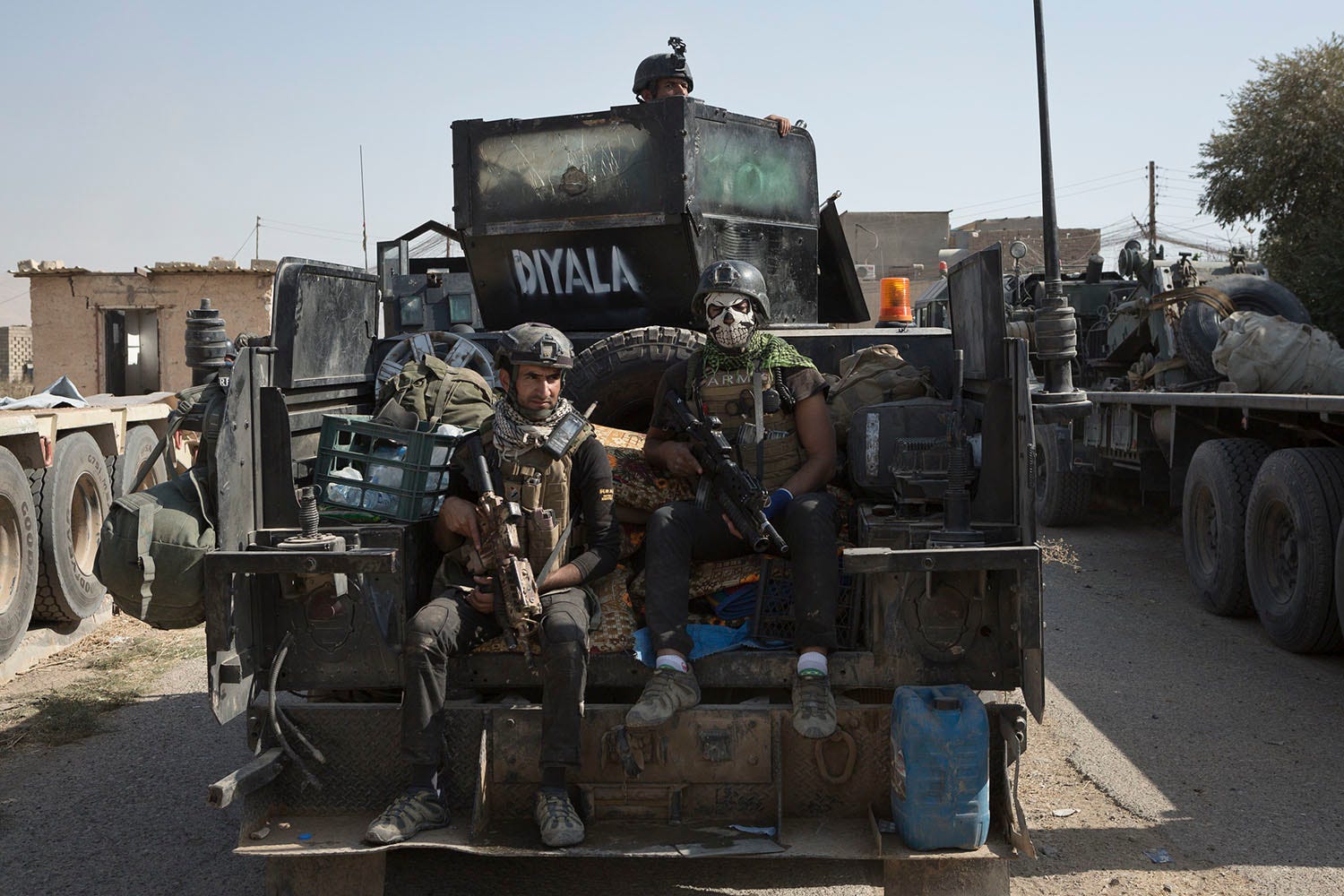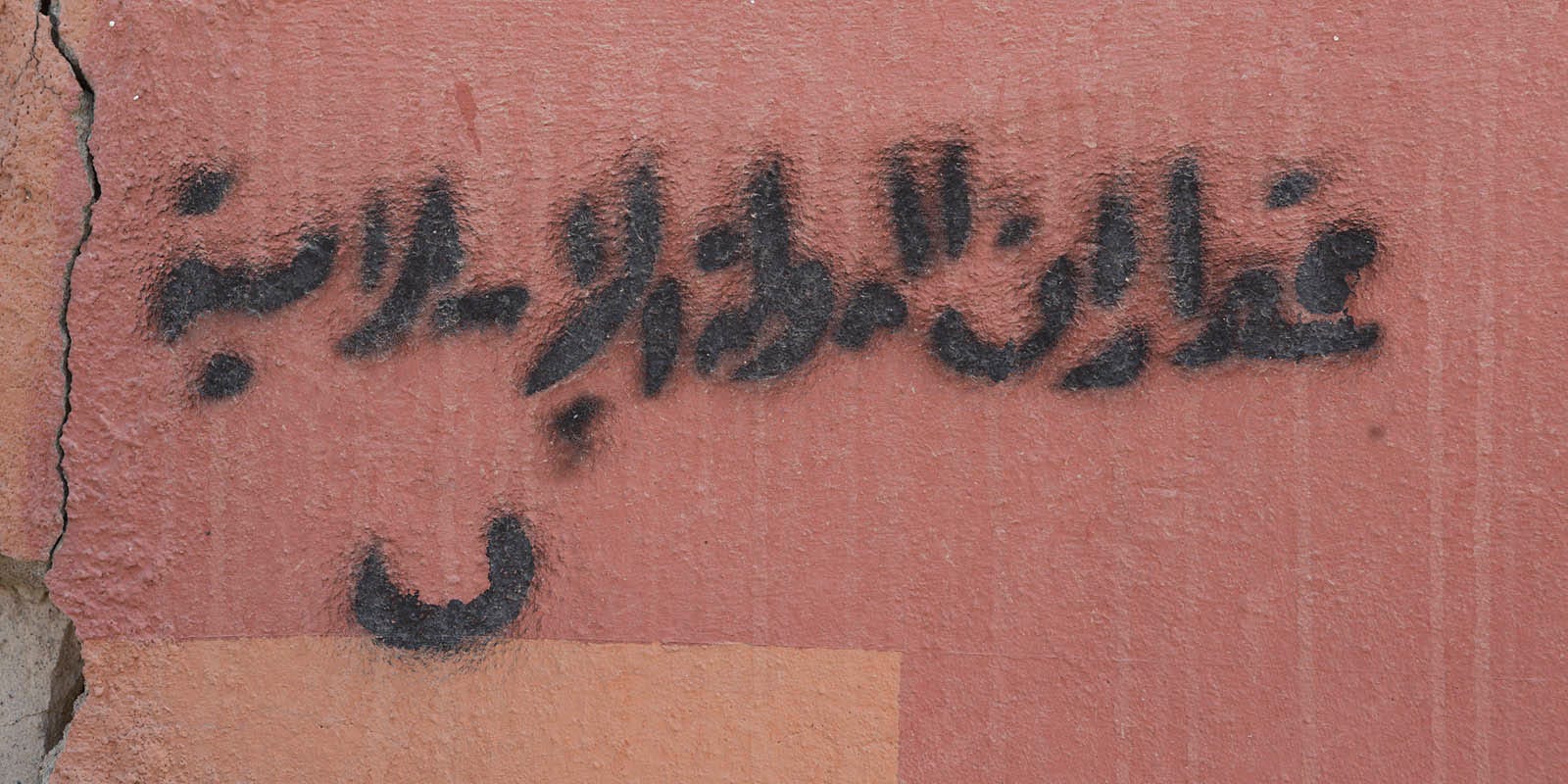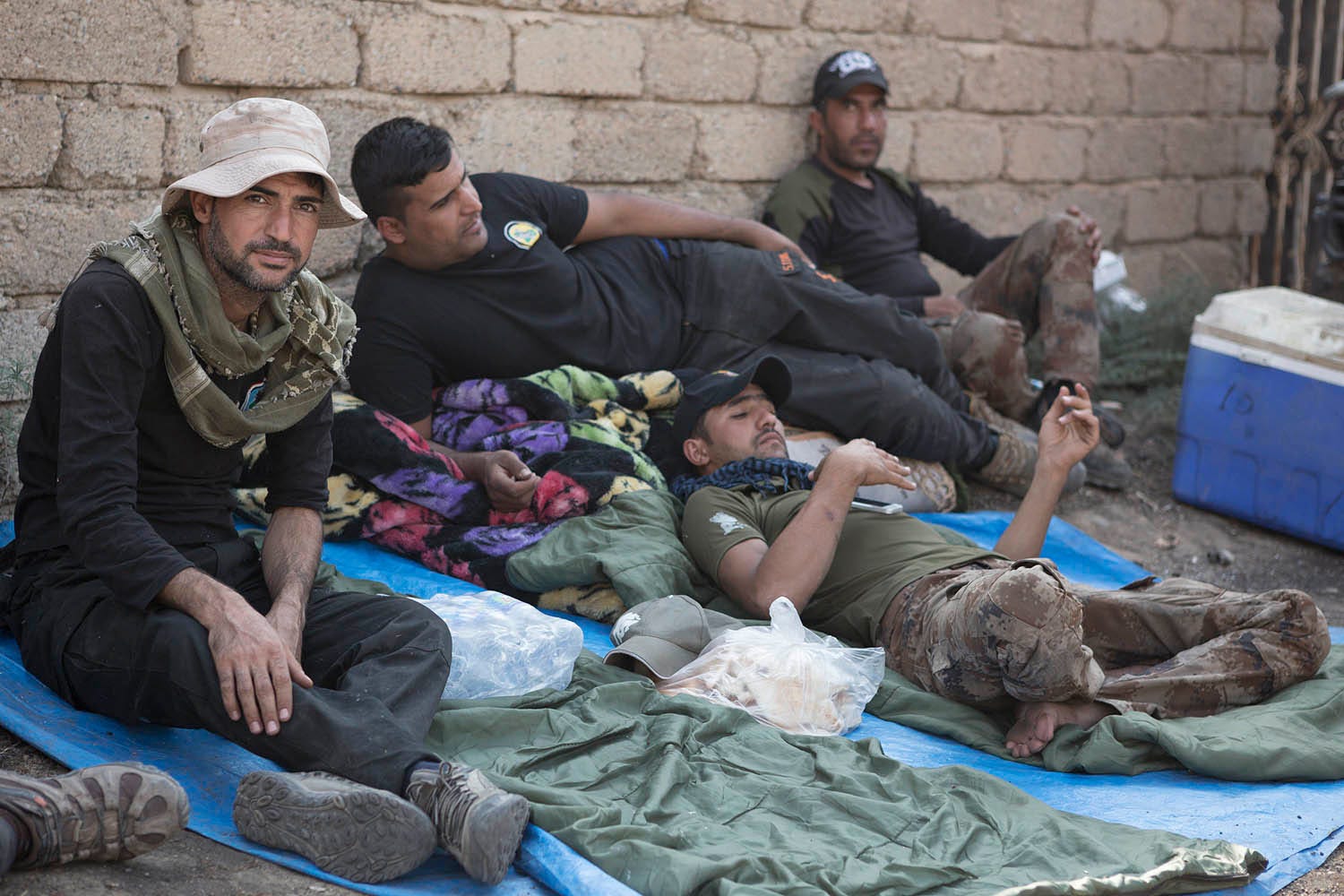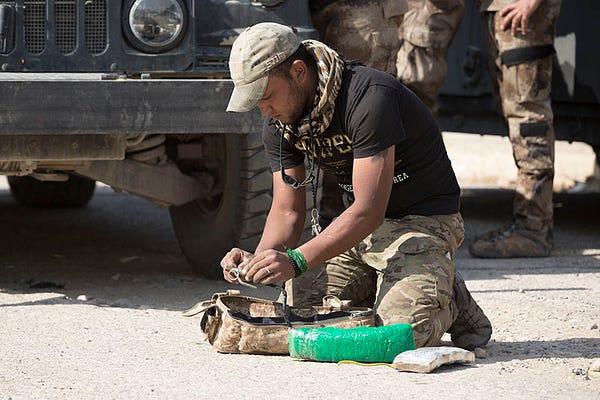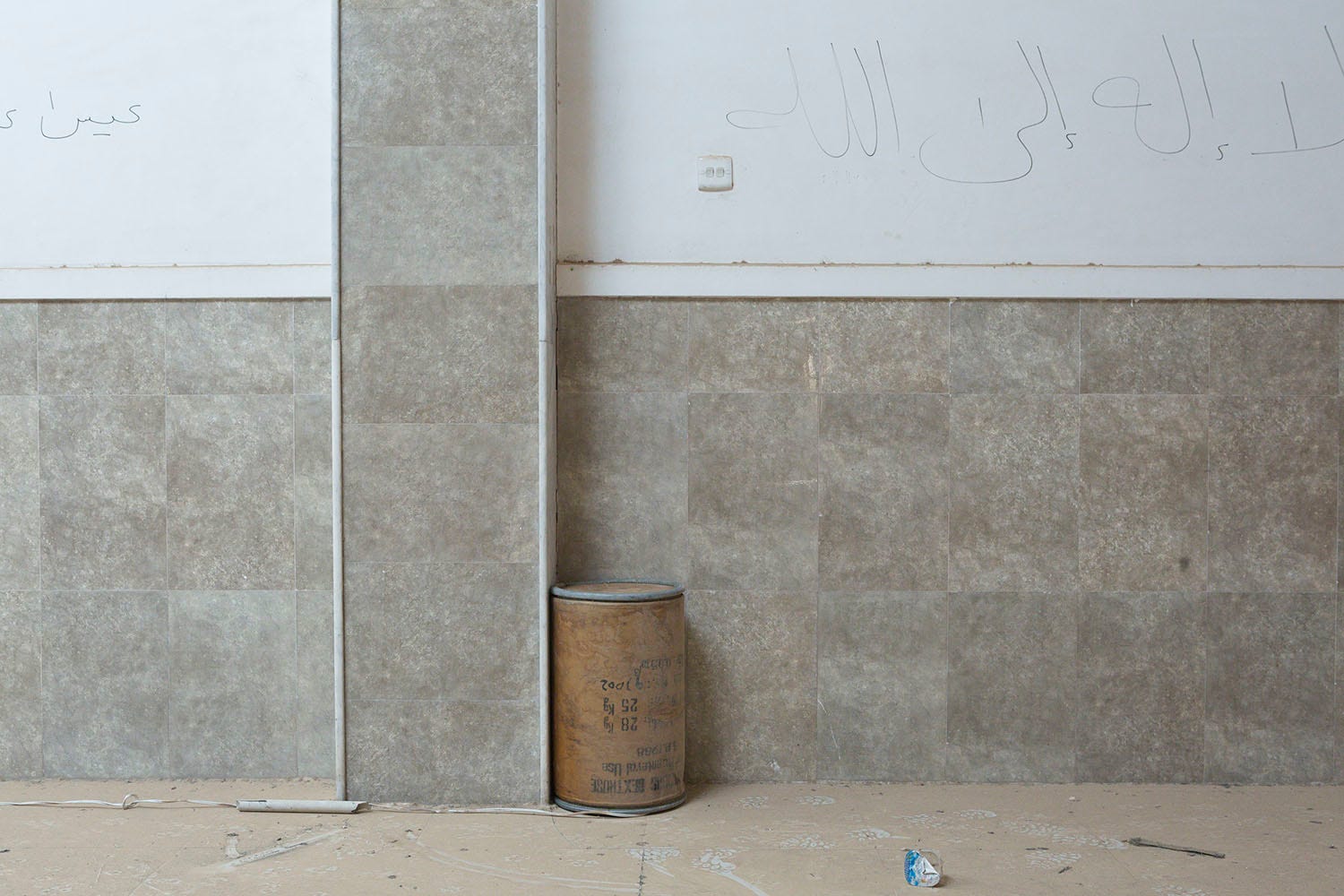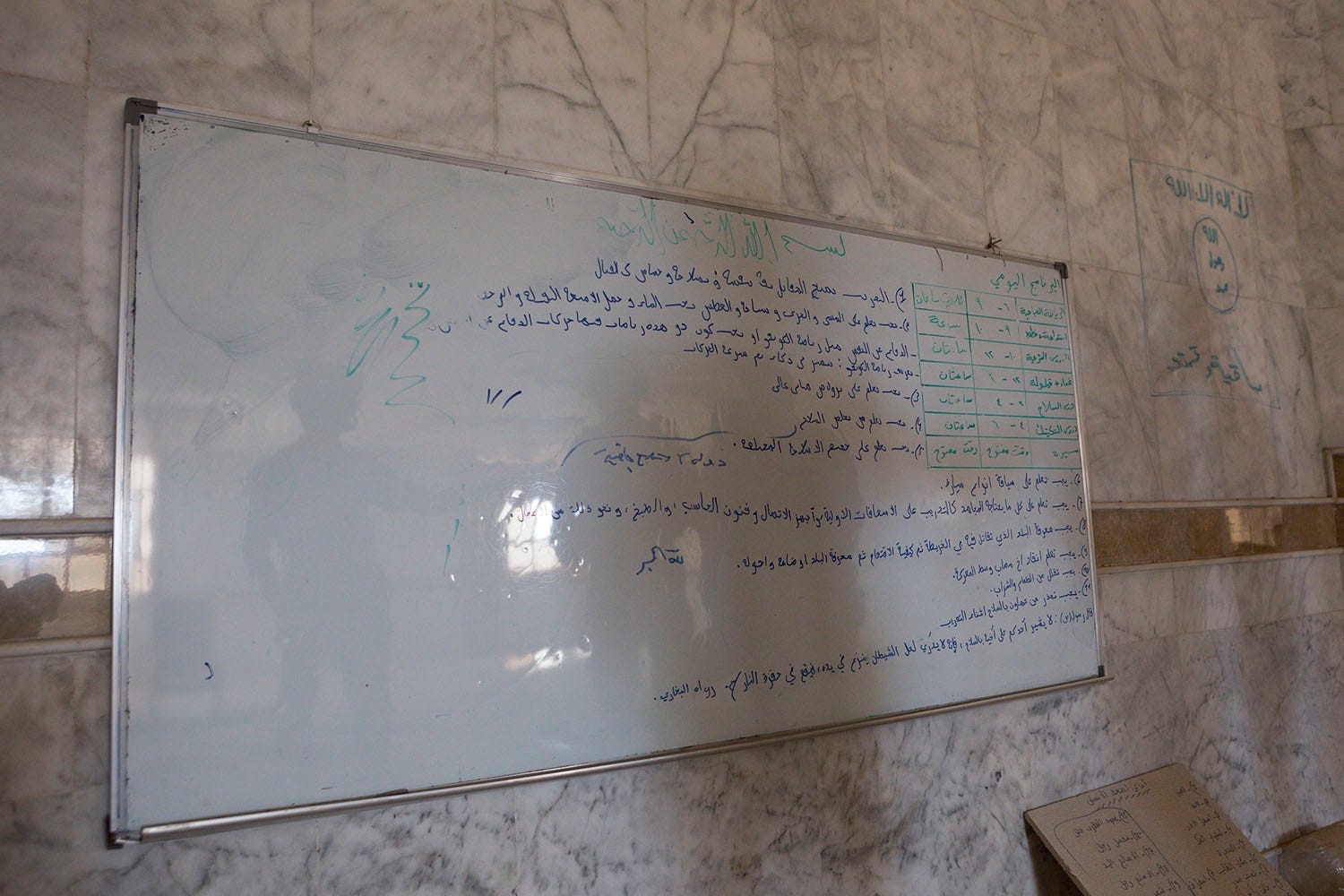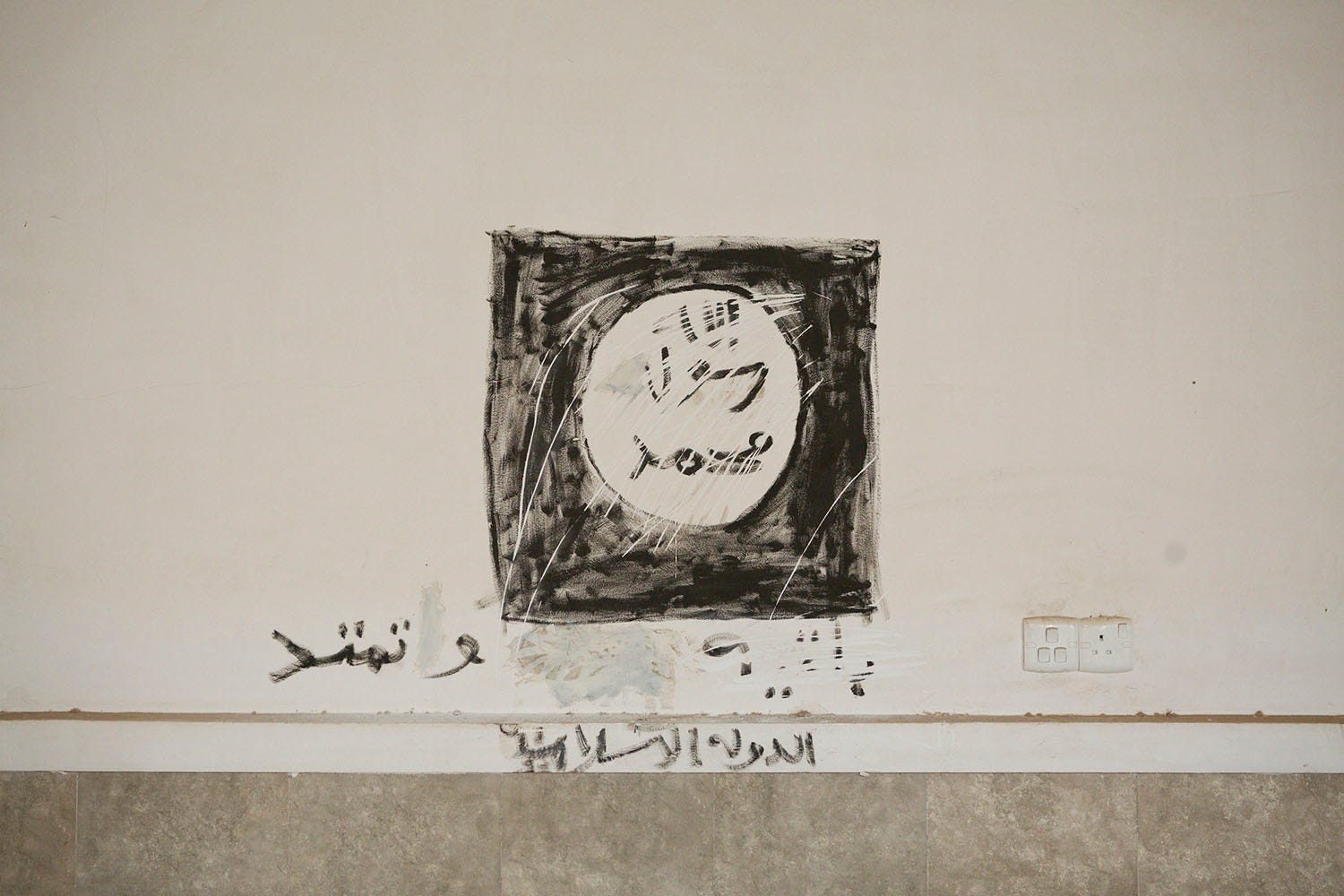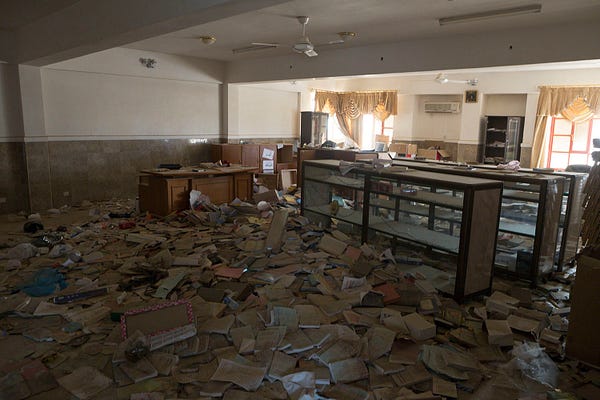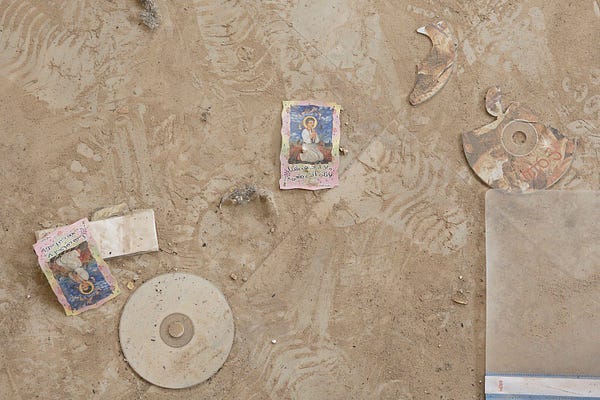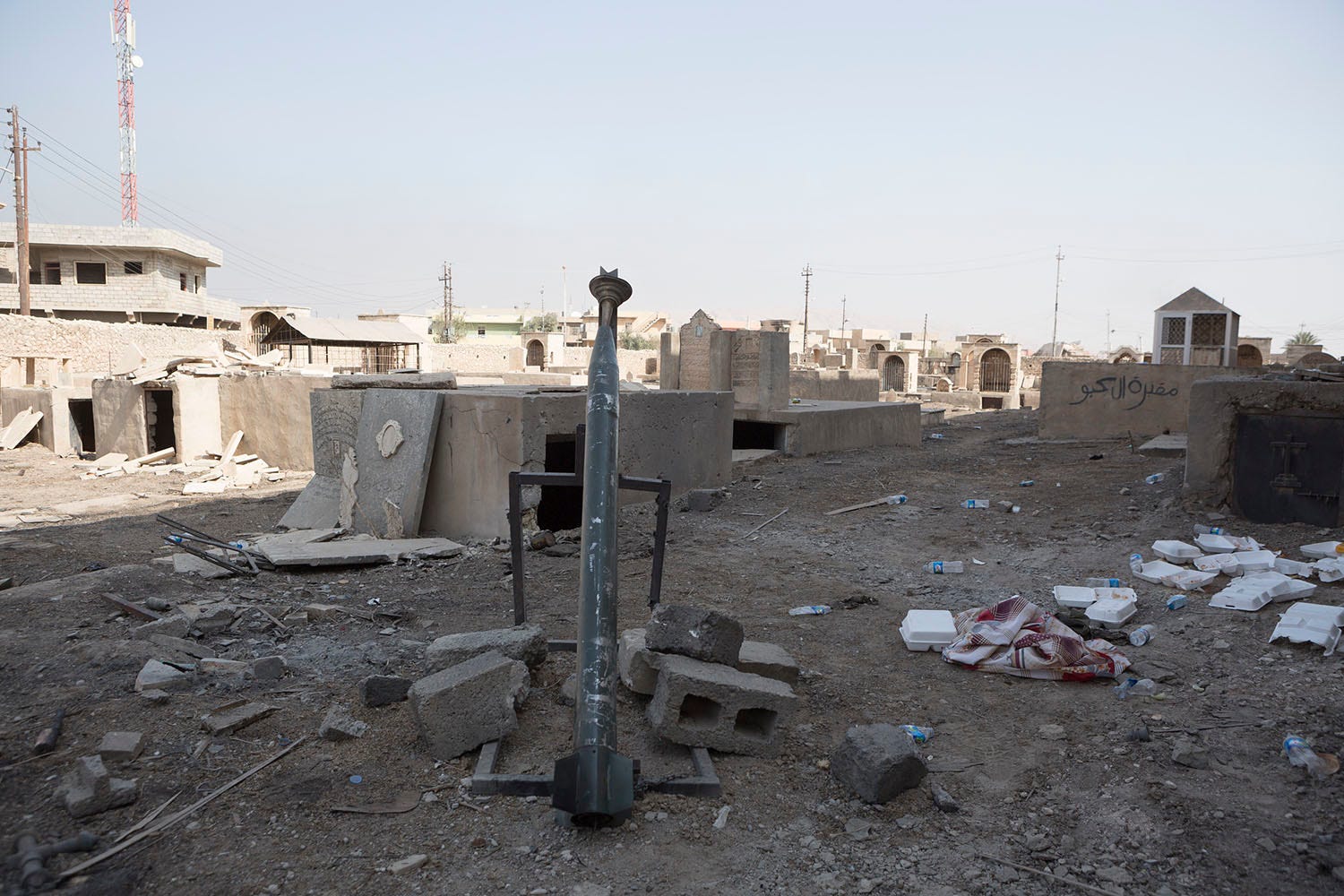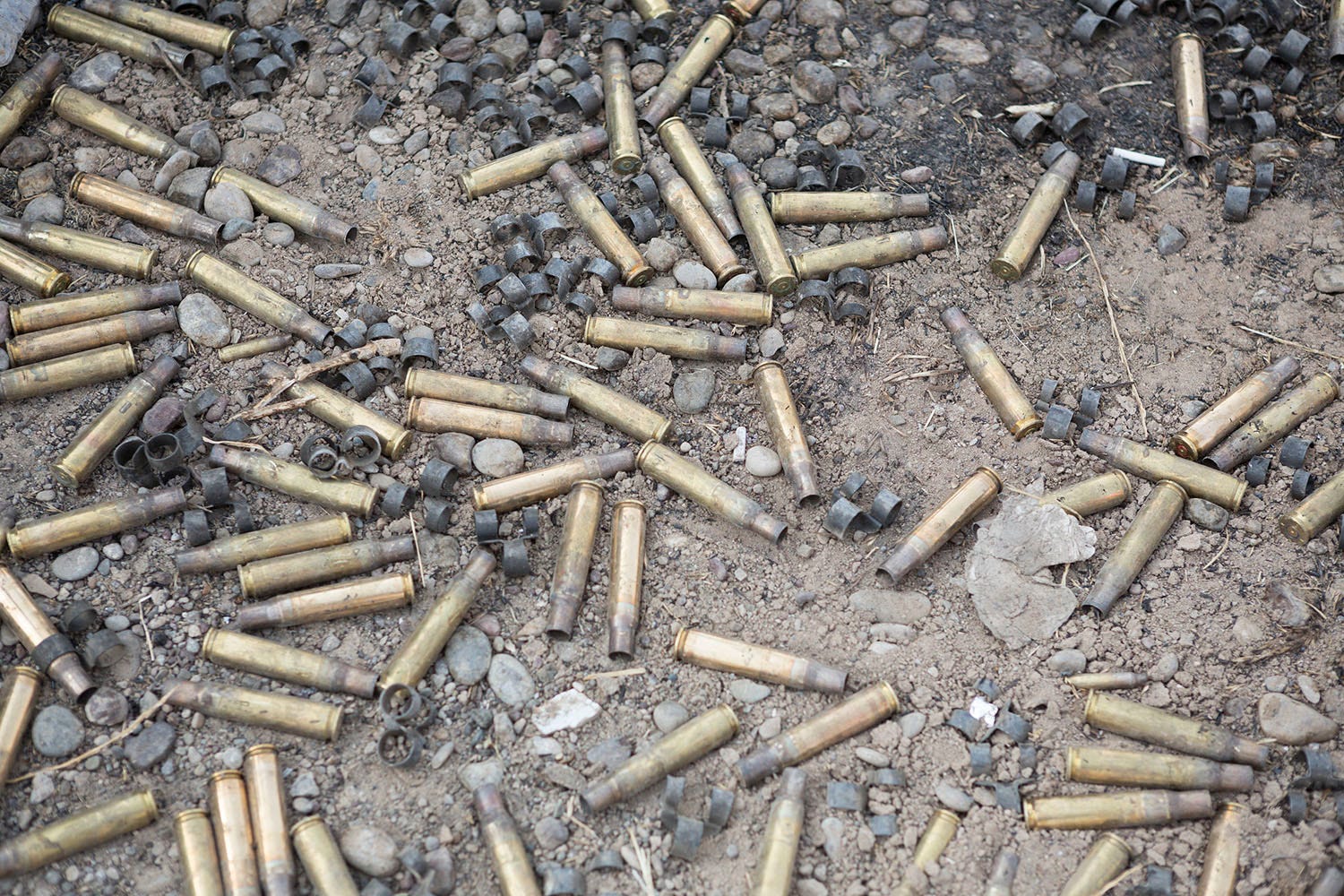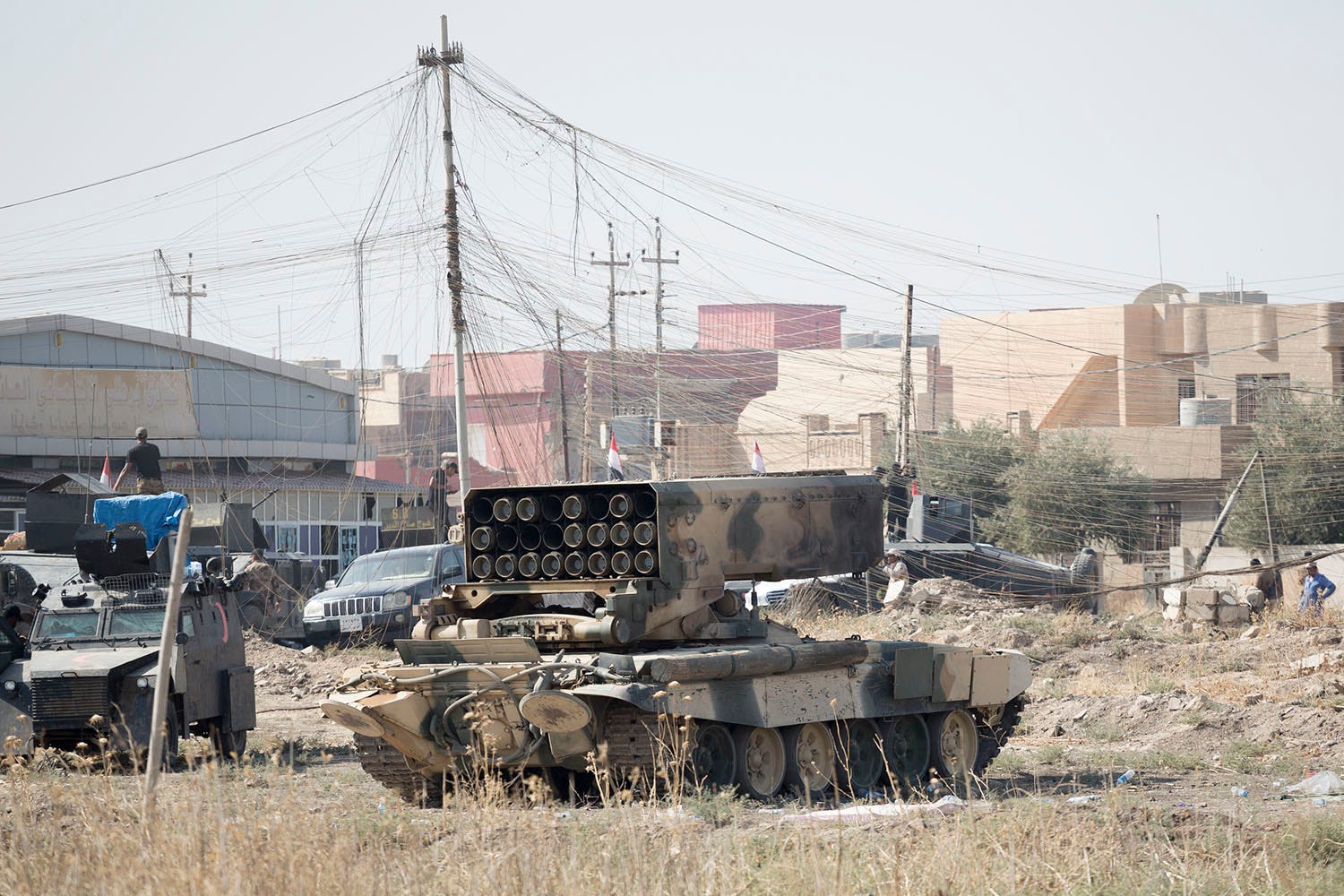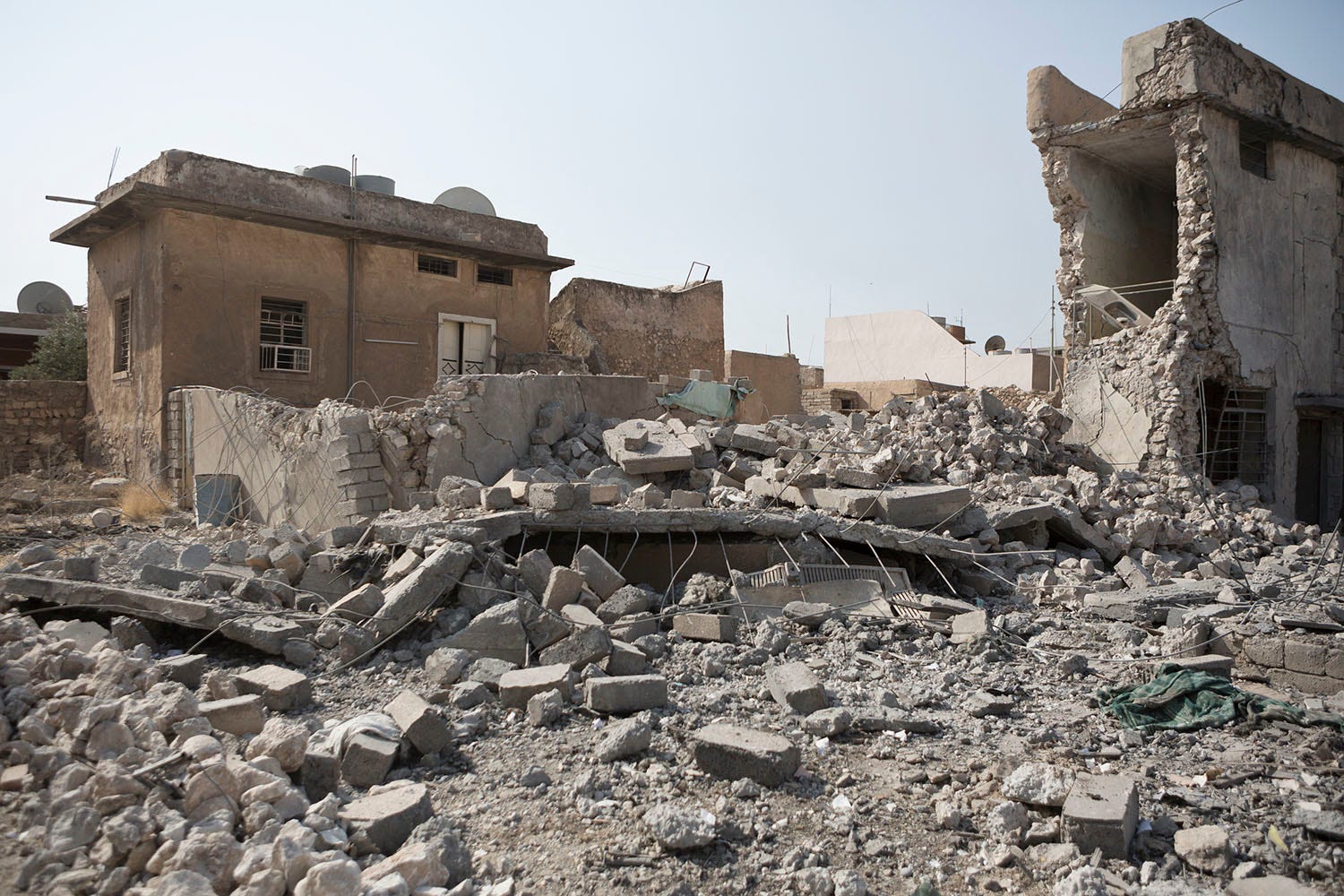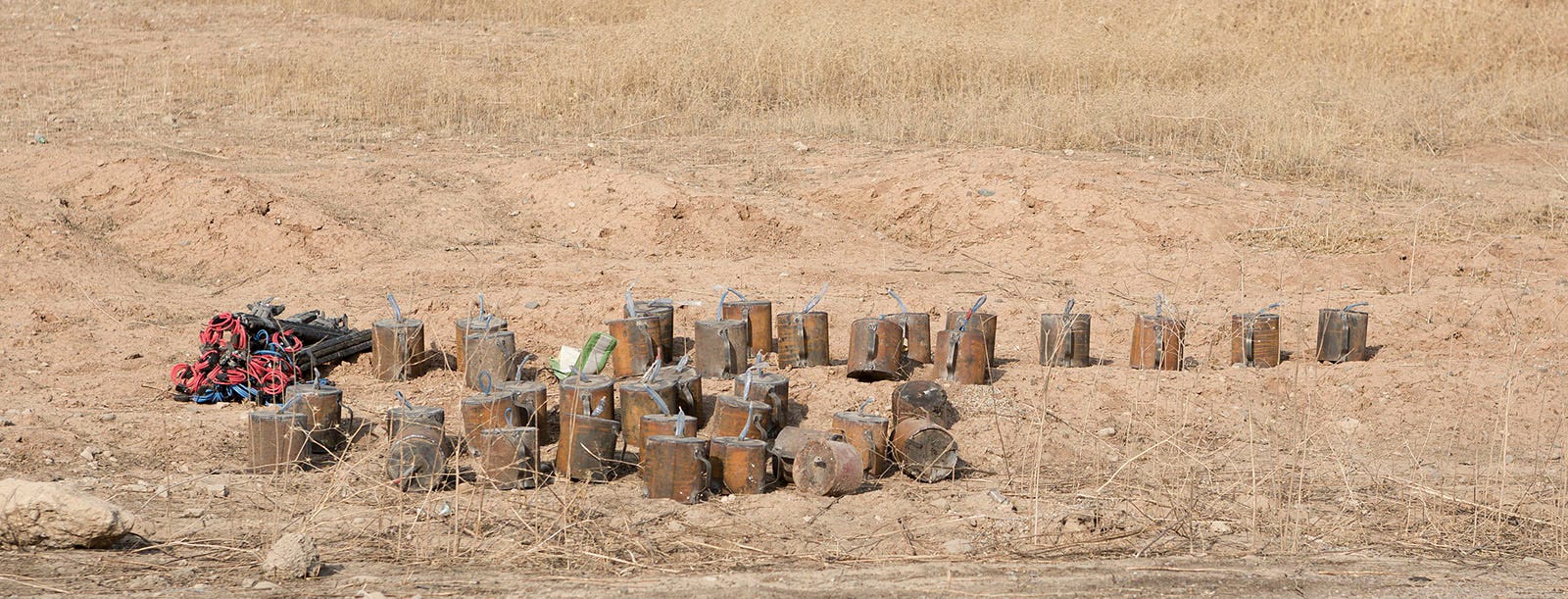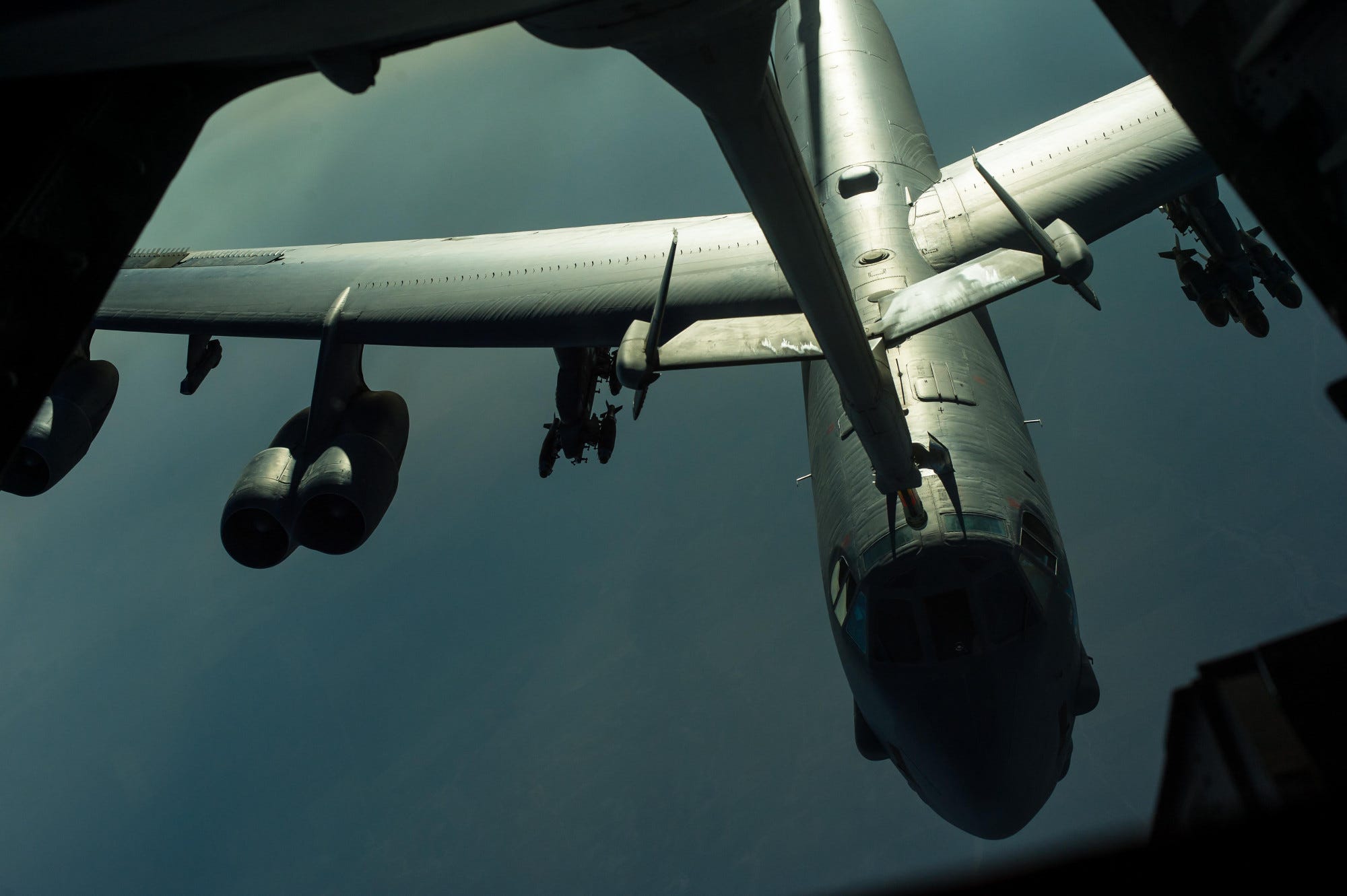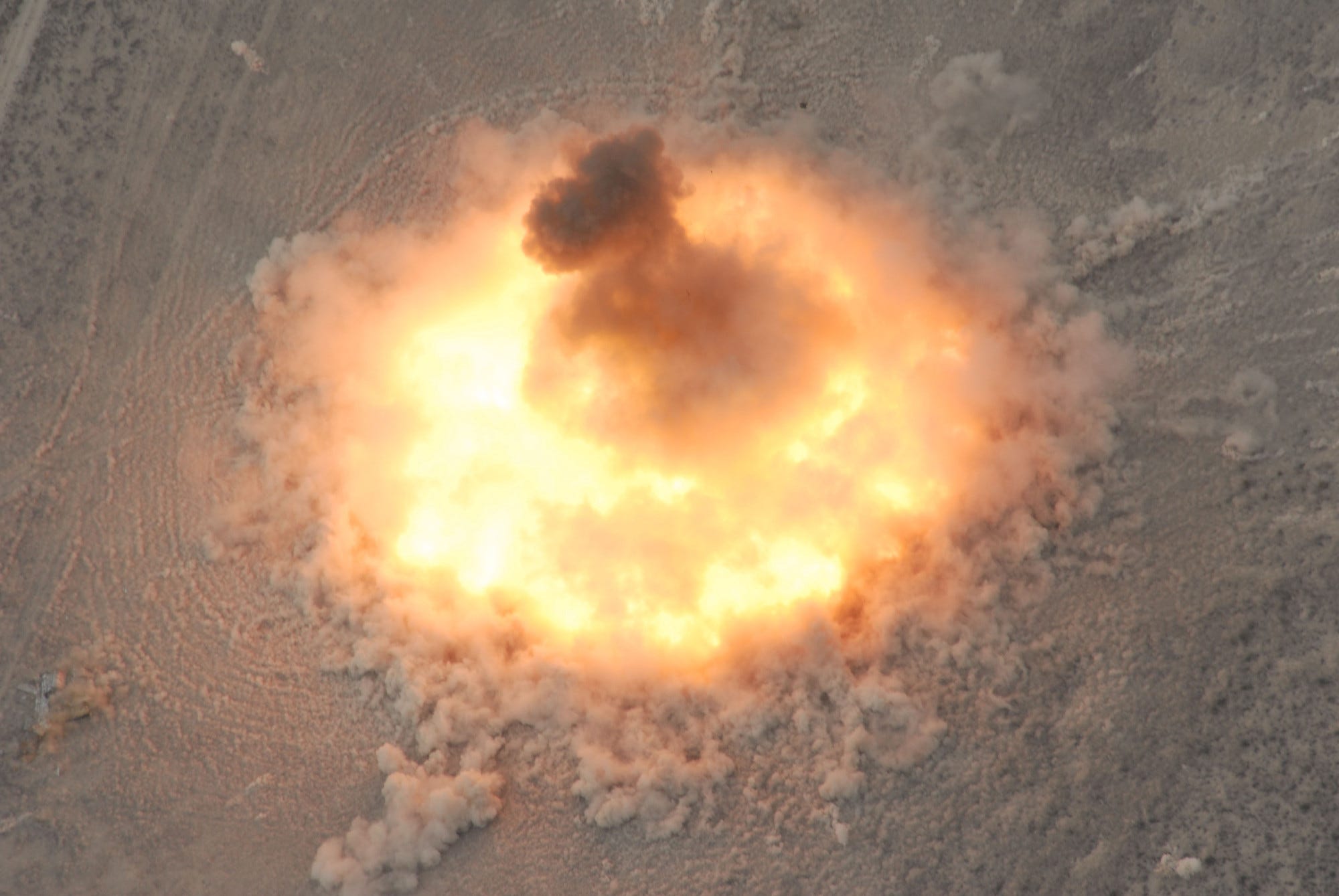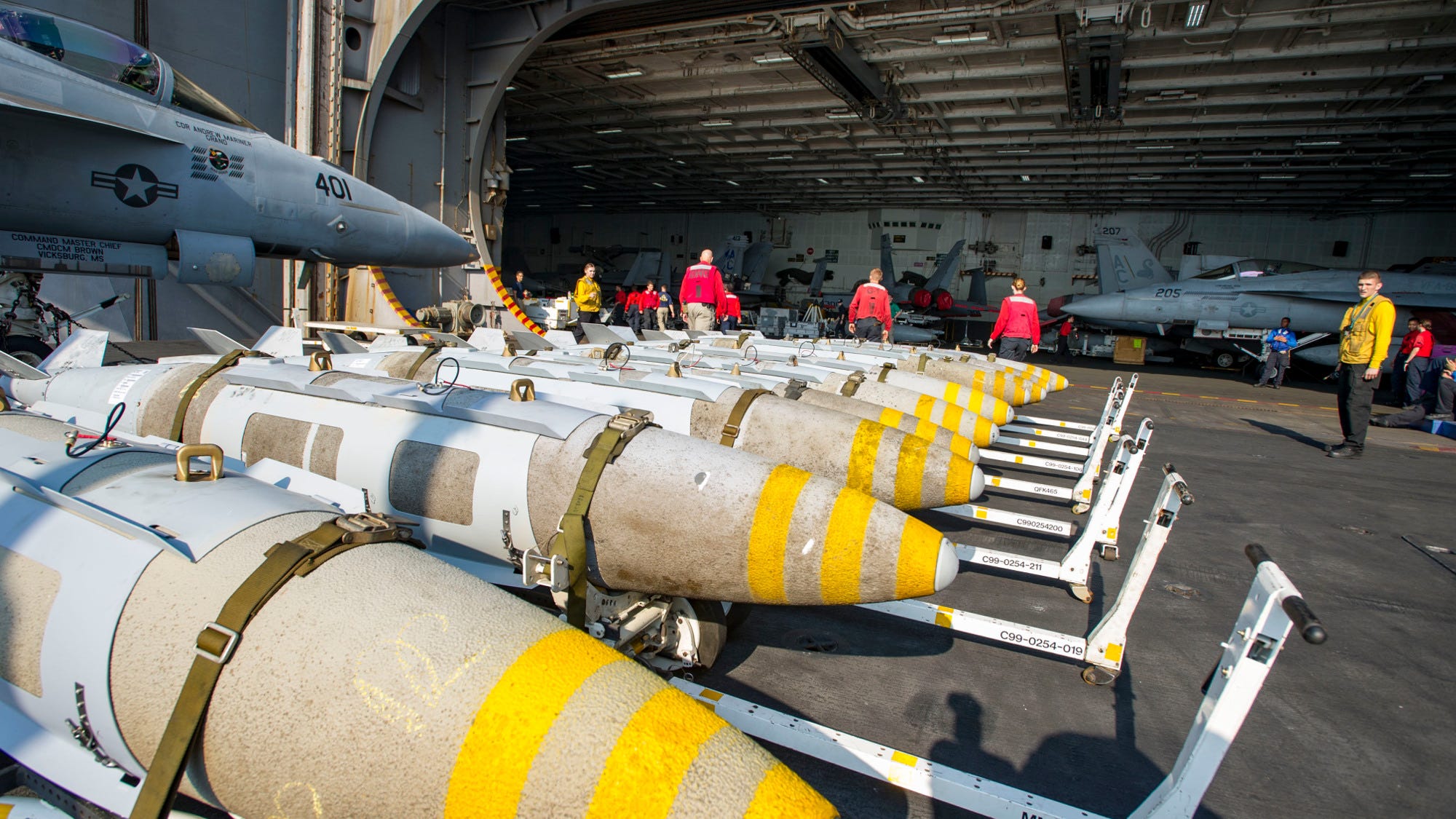 Militant fighters of the Islamic State. File photo
Militant fighters of the Islamic State. File photo
WikiLeaks: 29 Feb 1960 Foreign Service Dispatch from the US Embassy in Baghdad to the US Department of State, six scanned pages, declassified.
The document reports the terms of imprisonment and other sentences, imposed as a result of the 7 Oct 1959 Baath party assassination plot against the then Iraqi Prime Minister, Abdul al-Karim Qassim.
Notable figures sentenced include Saddam Hussien (“Saddam Husayn al-Tikriti”, Trial Group I) and the British-based Iraqi billionaire, Nadhmi Auchi, who was sentenced to three years “rigorous imprisonment” (“Nadhmi Shakir Awji”, Trial Group IV). More here.
ARANews: Raqqa – A top security official in the ranks of the Islamic State (ISIS) radical group was reported dead on Sunday, after a US-led coalition hit his car with an airstrike in the western countryside of Raqqa Governorate, in northeastern Syria.
“The airstrike killed at least five ISIS members, including al-Othman who used to lead the ISIS security department in Tabqa,” local media activist Abdulkarim al-Yousef told ARA News.
The raid comes as part of the coalition’s policy to target and hunt ISIS jihadi leaders.
“The drone attack was carried out based on information from local sources trusted by the Syrian Democratic Forces,” an SDF spokesman told ARA News.
The strike coincided with the announcement of the battle for Raqqa by the Kurdish-Arab alliance of the Syrian Democratic Forces (SDF).
Raqqa is deemed a de-facto capital for the ISIS’ self-declared Caliphate.
The US-backed SDF has established a new operations room to coordinate the battle for Raqqa against the Islamic State (ISIS). “On November 5th, the SDF established a new operations room known as the Euphrates Wrath to intensify coordination between the various military factions participating in the battle for Raqqa.”
Reporting by: Jamil Mukarram | Source: ARA News
Syrian propagandists have found the ideal launderers for their message: Western journalists
Tablet: Bashar al-Assad’s regime has pulled off a grotesque PR coup by corralling a number of prominent American journalists from outlets like The New York Times, National Public Radio, The Washington Post, and The New Yorker to participate in a conference designed to legitimize the rule of Syria’s genocidal head of state. The conference held Sunday and Monday in Damascus, was organized by the British Syrian Society, a “foundation” chaired by Assad’s father-in-law, the London-based physician Fawaz Ahkras. The larger purpose of the conference appears to be raising money for the regime and its war effort, in part by relieving sanctions against major regime figures.
Many of the participants (here is a partial list of attendees) are British journalists, like Christina Lamb of The Sunday Times, and other UK figures drawn from Akhras’ London contacts. Indeed, the conference is meant to have something of a British ambiance, which is why it’s being conducted according to “Chatham House rules”—a phrase that misleadingly (and hilariously) suggests that the British foreign office is convening the panels. It seems unlikely that the Syrian intelligence officers speaking at the event, like Col. Samer, know Chatham House Rules from Hama Rules, nor do they care. The point is to legitimize the regime’s message with a vague atmosphere of Western ideas and methods—which is why having Western journalists in the audience, and even on panels, is important to the regime. Attending a conference that features at least four Syrian regime officials who are currently sanctioned for their role in Assad’s war crimes, are, among others, the New York Times’ Beirut correspondent Anne Barnard, NPR’s Alison Meuse, and Dexter Filkins of The New Yorker
The stated purpose of the Damascus conference is to “facilitate a better understanding of a very complicated crisis.” And presumably journalists in attendance have rationalized their participation to their editors along those exact lines: Since we’re covering the other side of a war, they’re no doubt explaining, it’s a good thing to hear the Assad regime’s side of the story. And since we can’t get into Damascus safely otherwise, it’s fine if we go under the protection of the regime. How else could we get in there?
There’s a simple test for whether such excuses are valid: Will the Assad government provide access to non-regime figures, like the citizens that Assad and his allies have starved in the town of Madaya? Will the regime provide them access to the countless opposition figures, including peaceful activists, the regime has put in prison and tortured? The answers are “of course not” and “under no circumstances.”
So, why go? For the camaraderie? For the sheer joy of doing journalism with other journalists in comfortable surroundings, while 200,000 Syrians are trapped, starving and under military assault, in the ruined city of Aleppo? For the great Middle Eastern food?
To get a sense of what attending a conference put on by a genocidal regime is like, here are some pictures from the twitter feed of Suzan Haidamous of The Washington Post, one of the journalists attending the Damascus conference. She deleted them after posting the pictures Sunday, the first day of the conference, perhaps after one of the subjects expressed concern that pictures of journalists being fed lavishly in the middle of Damascus—perhaps courtesy of the Syrian regime—as Assad and his allies starved Syrian civilians close by might damage the reputations of those depicted in the photos.
In the first picture, from left to right, are Dexter Filkins of The New Yorker; Haidamous; Nour Samaha, who has written for Foreign Policy and The Atlantic, Rania Abouzeid, who has contributed to TIME and The New Yorker; and Nabih Bulos, a special correspondent with the Los Angeles Times. Hashtags for this picture included #Goodtimes and #journalism.
*** Suzan Haidamous, who was enthusiastically promoting her participation in the Assad whitewash “conference” in Damascus, deleted these pics 1/
So, here they are, for the record: with Dexter Filkins, Haidamous, Nour Samaha, Rania Abouzeid, and Nabih Bulos. 2/
In the second picture, from left to right, are Anne Barnard, The New York Times Beirut bureau chief, Heba Saleh of the Financial Times; Hwaida Saad of The New York Times; and Haidamous. Hashtags here included #news and #reporting
That one was posted with the hashtags #Goodtimes and #journalism. A couple more appropriate ones were left out: #obscene#disgraceful 3/
And here’s the second deleted pic, with Haidamous, Hwaida Saad, Heba Saleh, and Anne Barnard. For the record. 4/4 pic.twitter.com/82fxmJ0lXu
That one was posted with the hashtags #Goodtimes and #journalism. A couple more appropriate ones were left out: #obscene#disgraceful 3/
And here’s the second deleted pic, with Haidamous, Hwaida Saad, Heba Saleh, and Anne Barnard. For the record. 4/4 pic.twitter.com/82fxmJ0lXuA number of controversies have arisen during the course of the conference. Christina Lamb, the Sunday Times chief foreign correspondent, tweeted that she was incorrectly listed as a speaker at the event, when she was only going there to cover the conference. Electronic Intifada staffer Rania Khalek was also listed as a speaker at the conference, but then released a statement saying she was going only to report. She then announced that the critical response she got to her appearance had compelled her to step down from her post at EI, but former colleagues suggest she was more likely fired.
That even Khalek, a political activist and openly pro-Assad apologist, had some sense that this looks really, really bad does not reflect well on mainstream media organizations like The Washington Post, NPR, and The New Yorker.
For the reality is that the distinction between “speakers” and journalists merely covering the event as journalists is entirely irrelevant to the purpose of the conference, which was to eliminate such fine distinctions. That is why Western journalists were invited—to launder Assad’s information operation so that the regime’s political, military, security, and media officials, including those already sanctioned for their involvement in war crimes, were perceived to be no less serious than the American journalists they shared information and meals with: If The New York Times’ Beirut bureau chief sits at the same panel, and then at the same table at dinner, and walks away with the same swag as Bouthaina Shaaban, an Assad adviser sanctioned by the Department of Treasury in 2001, they are both legitimate voices, right?
This kind of information operation is more or less standard procedure for the Syrian regime, which has always used very simple images to send somewhat sophisticated messages. American policymakers who have visited Damascus over the last half-century to deliver what they typically described, in diplomatic terms, as “strong” messages to the regime of Hafez al-Assad and then his son Bashar failed to understand that their messages fell on deaf ears, and that the fact that they visited was actually the message. What the Assads gained by inviting them was pictures to prove to their domestic and regional adversaries, as well as their allies, that the United States was talking to them, which meant that they were legitimate.
The regime’s media love-in in Damascus serves the same purpose. The Assad regime wanted to legitimize its narrative of the five-and-a-half year conflict. All those people you think are innocent civilians are jihadi terrorists. They’re all ISIS, whether they’re armed or not. The tens of thousands of dead children are collateral damage. It doesn’t matter to the regime that some American journalists will leave the conference and report stories that don’t entirely jibe with the regime’s narrative. Indeed, the Assad government is encouraging “dissent” since it further corroborates their big message—there are different sides to this story, and ours is just as legitimate as theirs.
Ever wondered why
@nabihbulos &@Nour_Samaha‘s journalism is indistinguishable from regime press releases? Here they r @ regime’s PR shindig
@im_PULSE@Nour_Samaha Funny. I thought I was a better writer than that. Anyway, I’m off 2 do my job, which is 2 report both sides of war.The information operation is likely serving a more particular purpose as well. It’s a fund-raising campaign to assist a regime that’s broke, and under heavy sanctions. That’s why sanctioned regime figures like Shaaban, Ali Haider, Fares Shehabi, and Humam al-Jazaeri are at the conference—to give them a forum to address Western journalists, thereby effectively pronouncing them to be legitimate, too.
The fact that billionaire Iraqi-British businessman Nadhmi Auchi, a one-time business partner of now-imprisoned financier Tony Rezko, is also listed as a conference participant, is evidence of the seriousness of the enterprise. Syria will be rebuilt, the campaign argues, and serious men like Auchi are getting in on the ground floor, so it’s time for the Americans to stop fighting the future. “The regime has launched a concerted information campaign whose purpose is to begin focusing on the issue of reconstruction,” said Foundation for Defense of Democracies research fellow and Tablet contributor Tony Badran. “Specifically, how international donors should give money to a Syria still ruled by Assad. A major problem in this picture is U.S. and EU sanctions imposed on Assad and his regime. Hence, the information campaign, which involved allies of the regime in international organizations, the media and even the Syrian Christian clergy, has focused on the harm sanctions have caused Syrian citizens, and on the need to remove them in order for Syria to have a new start and rebuild. Some of the journalists attending the conference were part of this information campaign.”
Badran is referring to Nour Samaha, who reported from Damascus for The Atlantic to make the case for relieving sanctions. Khalek wrote against sanctions in an article for the Intercept, which was recycled by the Syrian press agency, SANA.
The argument is now supposed to circle back the other way, from the conference hall in Damascus via the editorial boardrooms of some of America’s top media organizations and to the next White House: It’s time to stop the bloodshed and accept that Assad is the president of Syria, for the foreseeable future. Syria needs to be rebuilt, but that can’t happen unless sanctions are removed.
It’s understandable that the Syrian regime and its propagandists are working hard to get their message out: After all, the alternative is further prosecutions for war crimes. The idea that major American news organizations are lending their brands and name reporters alike to the regime’s PR campaign to evade responsibility for its crimes is beyond shameful. It’s criminal.
*****
Slaughter in the playground: Six young children are killed on a break between lessons as ‘President Assad’s troops’ bomb a Syrian nursery school
A boy winces as he receives treatment at a hospital in Ghouta, an opposition-controlled suburb of the capital, Damascus, on Sunday
The White Helmets volunteer group posted this photo on social media purportedly showing a victim of the nursery attack on Sunday
****
RCP: A British citizen of Iraqi descent, Mr. Auchi, 70, is a billionaire, the 279th richest man in the world, according to a Forbes magazine survey last year. A great deal of Mr. Auchi’s money was made doing business with the regime of Saddam Hussein, much of it under the table. In 1987, Mr. Auchi helped French and Italian firms win a huge oil pipeline contract in Iraq, chiefly by paying off Iraqi officials, according to testimony given by an Italian banker to prosecutors in Milan. In 2003, he was convicted for his role in what was then the largest scandal in French history, involving payoffs from executives of the oil company now known as Total to political figures in Spain, Germany and Africa.
“‘He has been able to collect British politicians the way other people collect stamps,’ wrote Nick Cohen in a 2003 profile of Mr. Auchi in the left wing British newspaper the Observer.
“Mr. Auchi was a leading supplier of arms to Saddam’s regime. A former Belgian ambassador to Luxembourgcharged that a bank in Luxembourg owned principally by Mr. Auchi laundered funds — including Oil-For-Food money — for Saddam and other Islamic dictators.
“‘The name Nadhmi Auchi was just another name for Saddam’s intelligence service, or so we thought,’ said Nibras Kazimi, a former Iraqi dissident who is now a visiting scholar at the Hudson Institute in WashingtonD.C.
“Mr. Auchi is a business partner of Syrian-born businessman Antoin ‘Tony’ Rezko, who has supported Mr. Obama financially since his first run for the Illinois state senate in 1996.
“Mr. Rezko currently is in jail awaiting trial on charges he extorted money from firms seeking to do business with the state of Illinois…. Rezko’s bail was revoked Jan. 28 when the trial judge learned that he, friends and relatives had been wired $3.5 million [in May 2005] from firms in Lebanon controlled by Mr. Auchi. The judge feared Mr. Rezko was about to flee the country….
“Mr. Rezko has described Mr. Auchi as a ‘close friend.’ Mr. Auchi says they have only a business relationship. They’ve been partners in a chain of pizza restaurants in Wisconsin and in a major real estate development inRiverside Park in Chicago.
“The connection between Mr. Auchi and Sen. Obama is tenuous. But given Mr. Auchi’s shady past, his history of bribing politicians, it’s not unreasonable to ask if [he], through Mr. Rezko, was trying to buy influence with a rising political star [Obama].”

 Rebel shelling kills over 80 civilians in Syria’s Aleppo
Rebel shelling kills over 80 civilians in Syria’s Aleppo





